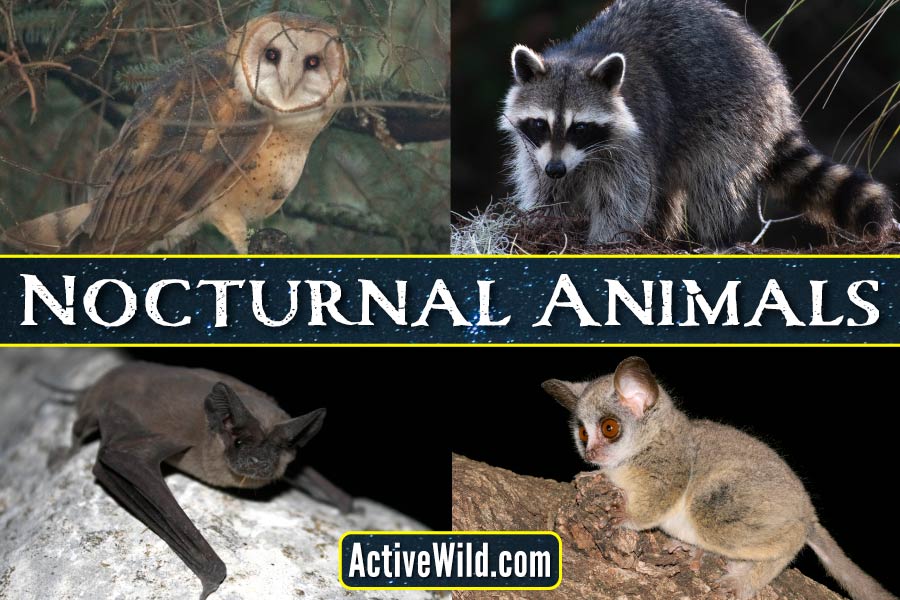Night Hunter: Tracking And Identifying Nocturnal Animals

Table of Contents
Understanding Nocturnal Animal Behavior
Nocturnal animals, creatures of the night, have evolved fascinating adaptations to thrive in low-light conditions. Understanding their behavior is crucial for successful tracking and identification.
Nocturnal Adaptations
Nocturnal animals possess a range of specialized adaptations to navigate and survive in the darkness. These adaptations often involve enhanced senses and physiological changes.
-
Enhanced Vision: Many nocturnal animals have large eyes with a high density of rod cells, providing excellent night vision. Owls, for instance, possess exceptional vision thanks to their large, forward-facing eyes. Other animals, like bats, rely less on vision.
-
Superior Hearing: Excellent hearing is another key adaptation. Large ears, like those found on many owls and bats, collect even faint sounds. This auditory adaptation helps them locate prey and avoid predators.
-
Keen Sense of Smell: Some nocturnal animals, such as many rodents and skunks, possess a highly developed sense of smell, crucial for finding food and mates in the dark. Their olfactory senses compensate for reduced visual input.
-
Specialized Whiskers (Vibrissae): Whiskers act as tactile sensors, providing detailed information about the surrounding environment through touch. This is particularly useful for navigating in low-light conditions.
Activity Patterns
The activity levels of nocturnal animals are far from uniform; they are influenced by several factors:
-
Moon Phases: Moonlight significantly affects activity. Animals may be less active during bright full moons, potentially to avoid predation, while becoming more active during new moons.
-
Seasonal Variations: Activity patterns often shift with the seasons. Breeding cycles, food availability, and temperature all play a role. For example, some animals may hibernate during colder months.
-
Circadian Rhythms: Like all animals, nocturnal creatures operate on internal biological clocks (circadian rhythms), dictating their daily activity cycles, though this rhythm can be modified by environmental factors. Prey availability and temperature can influence when animals choose to forage and move.
-
Predator Avoidance: Nocturnal animals will often adjust their activity based on perceived threats from predators. This can vary depending on moon phase and other environmental conditions.
Habitat Preferences
Nocturnal animals inhabit a wide range of habitats, each offering specific advantages:
-
Forests: Forests provide cover and abundant food sources for many nocturnal mammals, birds, and reptiles. Owls, foxes, and many small mammals thrive in forest environments.
-
Deserts: Desert nocturnal animals are adapted to extreme temperatures and limited water sources. Many reptiles and rodents have evolved strategies to survive in arid conditions.
-
Grasslands: Grasslands offer open spaces for hunting and foraging. Coyotes, owls, and various insects are common in grasslands.
-
Urban Areas: Surprisingly, many nocturnal animals have adapted to urban environments. Raccoons, opossums, and even some bat species have successfully integrated into human-dominated landscapes. Their ecological footprint expands to include human-altered environments.
Tracking Techniques for Nocturnal Animals
Tracking nocturnal animals requires specialized techniques and a keen eye for detail. Patience and respect for the animals are paramount.
Following Tracks and Signs
Identifying animal tracks, scat, and other signs in the dark requires careful observation and appropriate tools:
-
Use of Flashlights: Red-light flashlights are preferred, as they are less disruptive to nocturnal animals’ night vision.
-
Track Identification Guides: Refer to field guides or online resources to help identify the tracks of different species. Understanding gait patterns is key to accurate identification.
-
Recognizing Scat and Other Signs: Learn to identify scat (animal droppings), scratch marks on trees, burrows, and other signs left behind by animals. Scat analysis can offer valuable insights into an animal's diet and health.
Utilizing Technology
Technology plays a vital role in modern nocturnal animal tracking:
-
Night Vision Equipment: Night vision goggles or scopes significantly enhance your ability to observe nocturnal animals in low-light conditions.
-
Trail Cameras: Motion-activated trail cameras provide passive monitoring, capturing images and videos of animals without disturbing them. Data analysis from camera traps helps monitor animal activity, population density and movement patterns.
-
Remote Sensing: More advanced techniques, such as acoustic monitoring, can be used to detect animal vocalizations.
Silent and Stealthy Movement
Minimizing disturbance is essential for successful observation:
-
Slow and Deliberate Movement: Move slowly and carefully to avoid alerting animals to your presence.
-
Appropriate Clothing: Wear dark, neutral-colored clothing to blend in with the surroundings.
-
Scent-Masking Techniques: Using scent-masking products can help to reduce your scent profile, making you less detectable to animals with a keen sense of smell.
Identifying Nocturnal Animals
Identifying nocturnal animals can be challenging, but using multiple methods increases accuracy.
Visual Identification
While limited in the dark, visual identification remains useful:
-
Using Field Guides and Apps: Refer to field guides or use dedicated wildlife identification apps for your region.
-
Key Identification Features: Focus on size, shape, color, and other visible characteristics. Consider unique markings, such as stripes, spots, or distinctive body shapes.
Auditory Identification
Sound is a powerful tool for identifying nocturnal animals:
-
Animal Vocalizations: Learn to recognize the calls of common nocturnal animals. Owls’ hoots, crickets’ chirps, and foxes’ barks are just a few examples.
-
Sound Recording Devices: Use sound recorders to capture and analyze animal vocalizations. This is particularly useful for species with faint or elusive calls.
Scent Identification
While often more subtle, analyzing scent can be an additional tool for advanced trackers (this section is optional depending on the audience):
- Scat Analysis (advanced): Detailed examination of scat can reveal not only the species of animal but sometimes provide information about its diet and overall health. This requires specialized knowledge and experience.
Conclusion
Becoming a skilled night hunter requires patience, observation, and a deep appreciation for the nocturnal world. By understanding the behaviors, tracking techniques, and identification methods for nocturnal animals, you can unlock the secrets of the night and experience the wonder of these elusive creatures. Continue your journey of discovering the fascinating world of nocturnal animals! Start exploring tonight with our further resources on tracking and identifying nocturnal animals.

Featured Posts
-
 La Nouvelle Attaque De Chantal Ladesou Contre Ines Reg Fait Reagir
May 12, 2025
La Nouvelle Attaque De Chantal Ladesou Contre Ines Reg Fait Reagir
May 12, 2025 -
 Exploding Online A Fictional Henry Cavill Marvel Cyclops Trailer
May 12, 2025
Exploding Online A Fictional Henry Cavill Marvel Cyclops Trailer
May 12, 2025 -
 Lowrys Encouraging Words For Mc Ilroy Post Masters Highlight Their Strong Bond
May 12, 2025
Lowrys Encouraging Words For Mc Ilroy Post Masters Highlight Their Strong Bond
May 12, 2025 -
 Bayern Secure Championship Mullers Emotional Home Goodbye
May 12, 2025
Bayern Secure Championship Mullers Emotional Home Goodbye
May 12, 2025 -
 Debbie Elliott Her Influence And Achievements
May 12, 2025
Debbie Elliott Her Influence And Achievements
May 12, 2025
